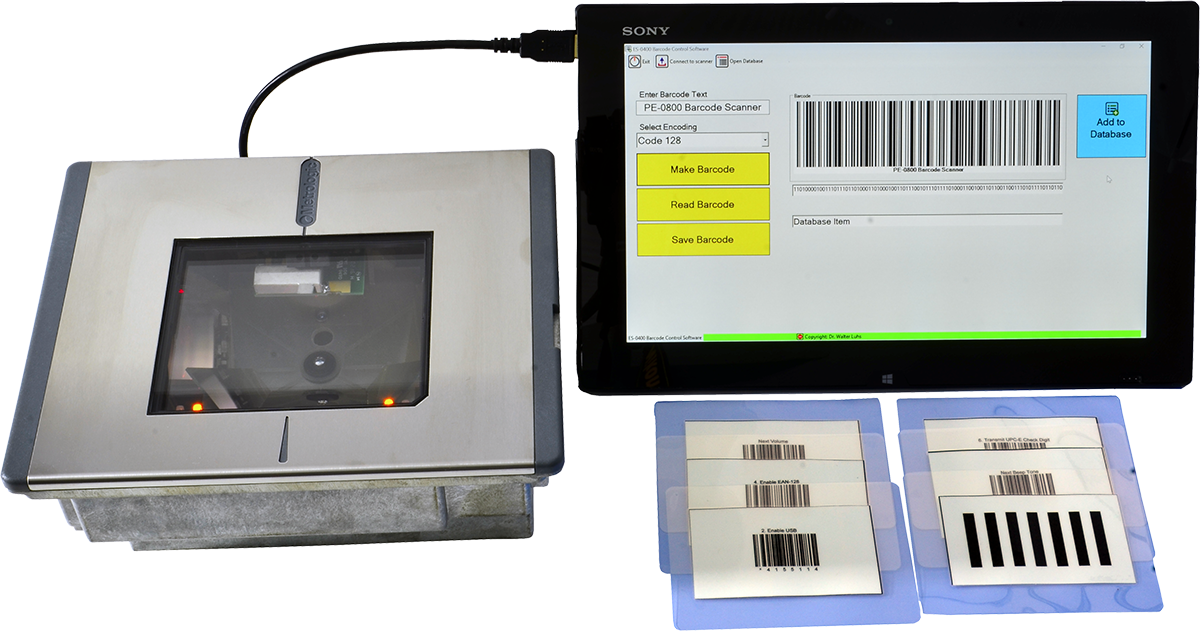Types of Barcodes
Visible Diode Laser
Rotating Polygon Mirror
Scanning Algorithm
Barcode Detection
Barcode Recognition
Photodetector
Computer Integration
LM-0800 Barcode Reader
Topics:
 LM-0800 Barcode Reader
LM-0800 Barcode Reader
The very first scanning of the now ubiquitous Universal Product Code (UPC) bar code was on a pack of Wrigley Company chewing gum in June 1974. The breakthrough became only possible due to the invention of the laser, especially the Helium Neon laser emitting a visible and continuous red beam. The use of laser light with optical and mechanical scanner made it possible to read the bar code under nearly all directions of observation which is written on an object. Another key component for the success of the bar code reader has been the upcoming computer. Once the scanned information is present as a modulated electronic signal, it has to be decoded, stored and displayed. After the successful and useful implementation in supermarkets the idea of bar code identification was used for postal application, tagging of patients in medical treatments, luggage tagging in air transportation and a lot more. This experiment makes use of a modified regular cash desk scanner to introduce this exciting technology. All major components are made accessible like the rotating polygon mirror, beam distribution mirror and receiver optics. The analogue optical signal is tapped and made available via external buffer amplifier to be displayed on an oscilloscope. A set of different enlarged bar codes are used to track the chain from the analogue to the digital signal conversion. By means of a set of black beam blocker the beam bender mirror are blinded to obtain only one scanning line to facilitate the interpretation of the optical signal. The scanner is connected via its USB bus to a computer where the received code is encoded and displayed. The software uses an attached database to identify already known scanned object or store newly scanned ones. A variety of own bar codes can be created and if required printed to own labels.
| Item | Code | Qty. | Description |
|---|---|---|---|
| 1 | CA-0050 | 1 | Set of tools and connection cable |
| 2 | CA-0450 | 2 | BNC connection cable 1 m |
| 3 | ES-0800 | 1 | Bar-code scanner software |
| 4 | OM-1000 | 1 | Bar-code scanner |
| 5 | OM-1010 | 1 | Configuration bar code symbol cards |
| 6 | OM-1020 | 1 | Bar-code sample cards |
| 7 | OM-1030 | 1 | Set of beam blocker cards |
| 8 | UM-LM08 | 1 | Manual Bar-code Reader |
| Required Option (order separately) | |||
| 9 | CA-0120 | 1 | Tablet PC Windows |
| 10 | CA-0200 | 1 | Oscilloscope 100 MHz digital, two channel |
| Media Type | Title | File Size [MBytes] | Action |
|---|---|---|---|
| LM-0800 Bar-code Reader Version: 2014 |
10.9 MB | Download | |
| Catalogue Page | |||
| JPEG, PNG, SVG | Pictures | ||
| MP4 | Video |